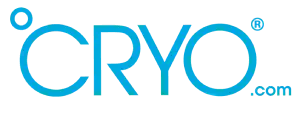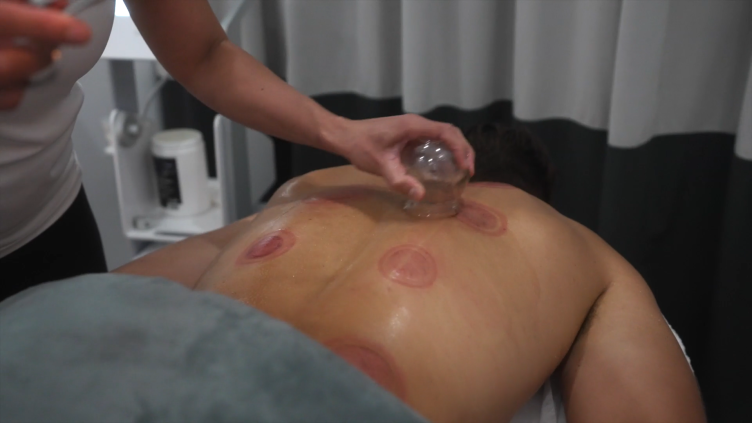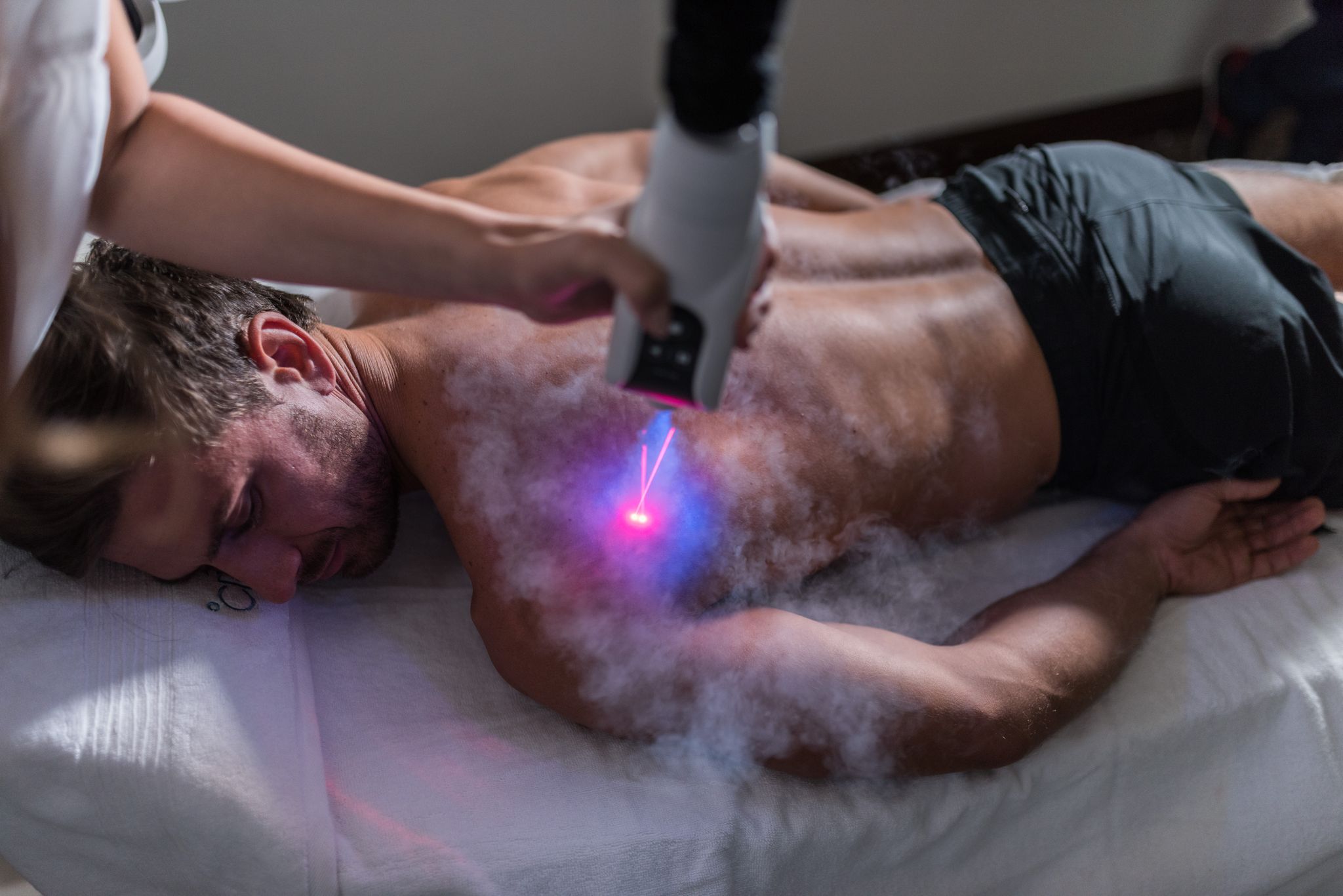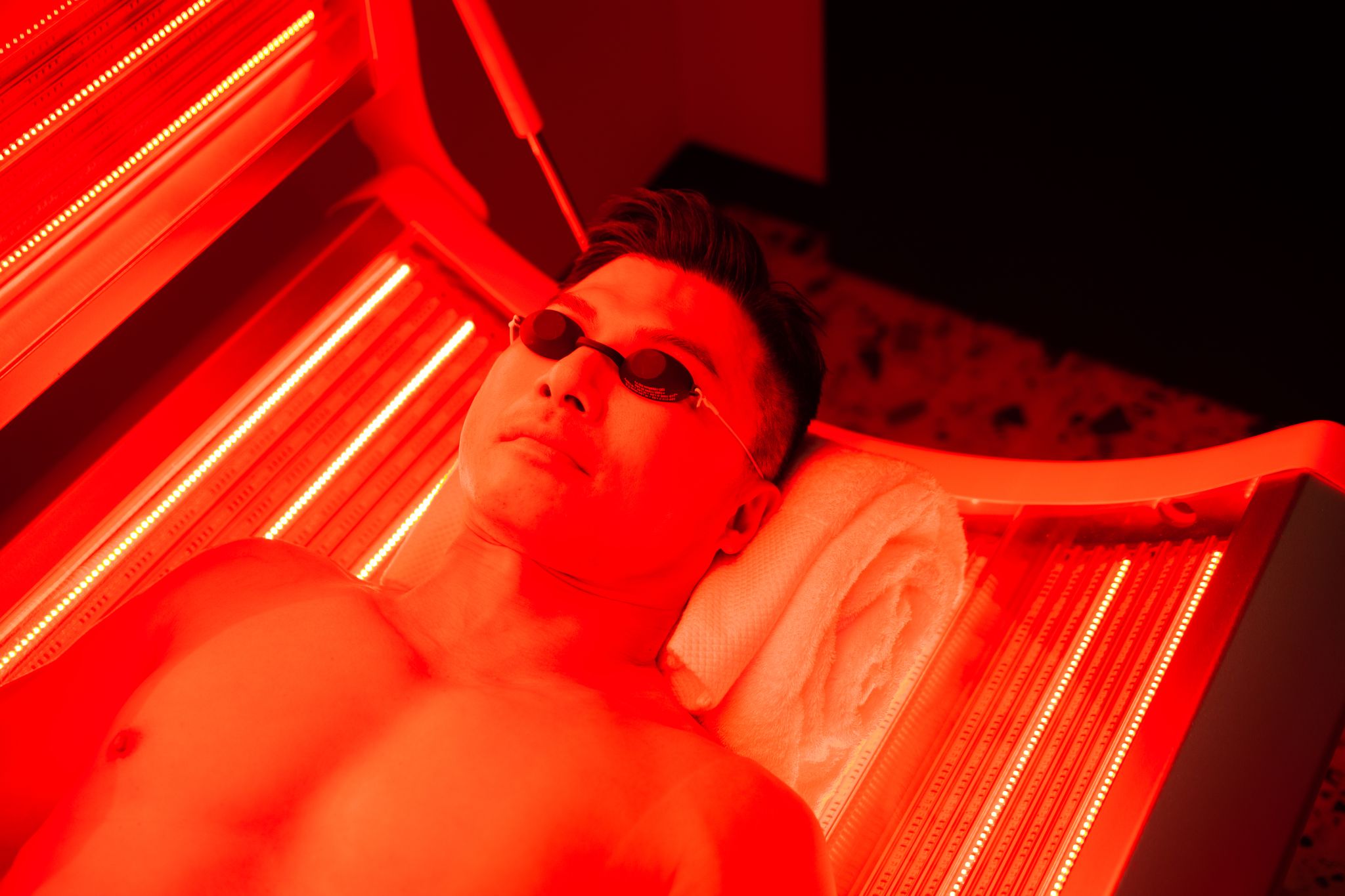What Happens Within a Physiotherapy Session at °CRYO
Physiotherapy is a health care profession that assists to restore, maintain and maximize strength, function, movement and overall well being. At °CRYO we offer °CRYO Freezio which is the perfect combination of Physical Therapy along with Cryotherapy to obtain maximum results/benefits. It helps you to recover from physical difficulties and movement loss, restore body functions and enable you to maximize the quality of life. These sessions are carried out by our Head physiotherapists who are well trained, experienced in this field and can assist clients with the best quality service. The duration of these sessions varies between 60-90 minutes depending upon the patient’s need.
At first, patient consultation is carried out by the Doctor (Head Physiotherapist) prior to the start of the first session. Consultation is carried out to evaluate the Range of motion (ROM) of joints involved, Manual Muscle Testing (MMT) and Pain assessments. Based on the evaluation, treatments are assigned where we use evidence-based methods such as Kinesiology, Electrotherapy, Joint Mobilization, Exercises, Theragun, Warm compressions and Kinesiology Taping to treat various conditions like Acute and Chronic Pain, Soft tissue injury, Cartilage damage, Arthritis, Gait disorders, Sports injuries and Physical Impairments of Musculoskeletal, Cardiopulmonary, Neurological and Endocrine origins.
We at °CRYO, commonly deal with clients having various conditions like Frozen Shoulder, Tennis Elbow, Cervical Spondylitis, Low Back Pain, Plantar Fasciitis, Sprains, Sciatica, Osteoarthritis, and Muscle pull.
SESSION 1
The subjective assessment
You should arrive 5 minutes early to fill out the disclaimer form. Your Physiotherapist will then greet you and bring you into the consultation room. The sessions last between 45 minutes to an hour depending on your condition and the progress that you make.
The bulk of your first session will be to assess and collect your present and past medical and family history. This part of the session is called ‘subjective assessment’.
Typical questions that are asked include:
- Origin of the condition: How long have you had the condition for, how did it start, was it an accident or injury or long-term strain?
- Have you already seen a practitioner?
- What makes it better, what makes it worse?
- How does it affect your daily life?
- What is your area of work and activities which are affected by the injury?
The physiotherapist will also verify your medical history to check if your current condition is linked to a past condition. Collecting all of this information is important because it will ensure that the advice the physiotherapist gives you is safe and will help to devise a hypothesis for the injury. It will also help you both to determine your goals and expectations for treatment.
The objective assessment
The next step in this first appointment is to physically assess your injury, this is known as the ‘objective assessment’. At this point, you will be asked to perform a series of movements that will help to demonstrate where you may have stiffness or discomfort. This assessment helps to confirm the injury hypothesis made in the subjective assessment.
At the end of this session, you will be given some home exercise program that includes proper ergonomics at home and workplace. Your physiotherapist will explain what the aim of this treatment is, and what you should hope to achieve from it. If you have exercises to do, proper technique is explained and videos are provided for better understanding.
There is a huge array of treatments that Physiotherapists can do. Below is a list of the most common treatments & Electro Therapy treatment modalities that we use in CRYO, yet it varies depends on customer condition:
- Transcutaneous Electrical Nerve Stimulation (TENS):
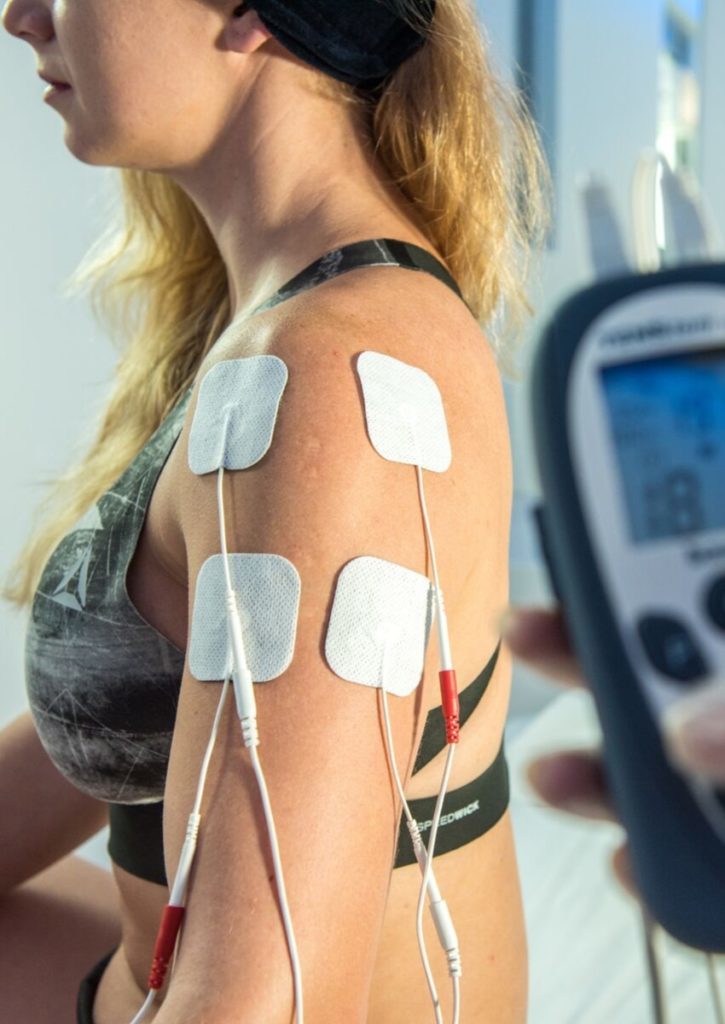
TENS is a therapy that uses low voltage electrical current to provide pain relief and for rehabilitation. It consists of a battery-powered device that delivers electrical impulses through electrodes that are placed on the surface of the skin. They are placed at or near nerves where the pain is located or at Trigger Points.
It works on 2 principles :
First: It raises the level of Endorphins, which are the body’s natural pain-killing chemical, which in return block the perception of pain.
Second: It stimulates nerve cells that block the transmission of pain signals and thus modify your pain perception.
TENS is also used for some common conditions like Fibromyalgia, Tendinitis, Bursitis, Low back pain, Diabetes Neuropathy, and Peripheral arterial disease.
This treatment lasts for approximately 10-15 minutes.
- Localized °CRYOTHOR:
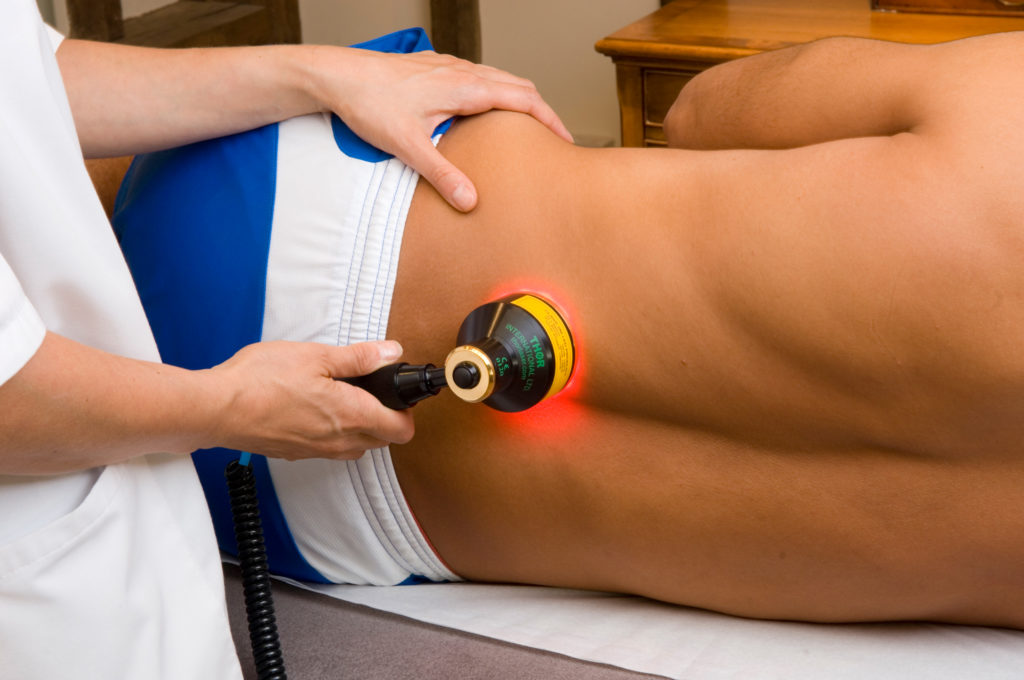
Localized °CRYOTHOR is a non-invasive device that uses near-infrared laser and LED cluster (red light) to reduce pain, Inflammation and to promote healing. It works on the principle of Photobiomodulation(PBM) and it works on a cellular level.
It reduces oxidative stress, which is considered as the main trigger for most diseases and degenerative conditions. It is highly effective for acute and chronic musculoskeletal conditions like Sports injuries, Fibromyalgia, Neuropathies, Gout, Arthritis, Tennis elbow, Plantar fasciitis and many more.
This treatment lasts for approximately 25-30 minutes.
- Localized Cryotherapy
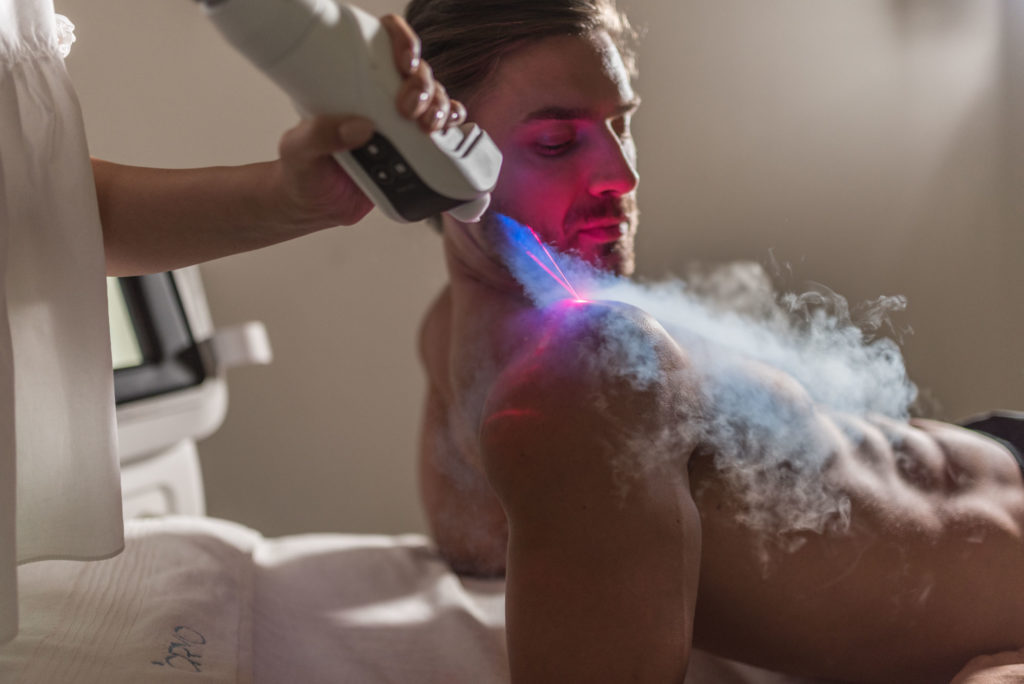
Localized cryotherapy targets specific areas of the body with subzero temperature (-160°C) on the surface of the skin to reduce pain and inflammation and to maintain normal Range of motion (Schasser and Colleagues 2007). It causes vasoconstriction that reduces the circulation to the affected area temporarily, which in return brings more nutrients and oxygen and removes metabolic waste products. It has an analgesic effect on nerve endings. It also speeds up the recovery period so it is used by many athletes and sports players nowadays. Localized cryotherapy is used in various health conditions like psoriasis (Shamsadini 2005), arthritis (Hirvonen 2006), Sprain, Soreness, Inflammation, Muscle pull, ligament and tendon injury and many more.
This treatment lasts for 10 minutes.
- Theragun
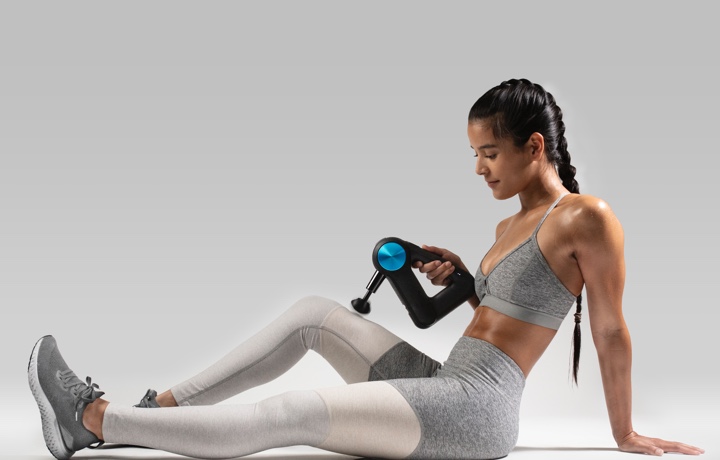
At °CRYO we use Theragun which is a percussive therapy device (Soft tissue manipulation) that uses amplitude, frequency, and torque to reduce muscle soreness, increase range of motion, increase blood flow, reduce pain and decrease lactic acid. It reached 60% deeper into the muscles than the average massager, at the speed of 40 times per second. It helps with workout recovery by releasing muscle tension and relieving soreness.
- Kinesiology Taping
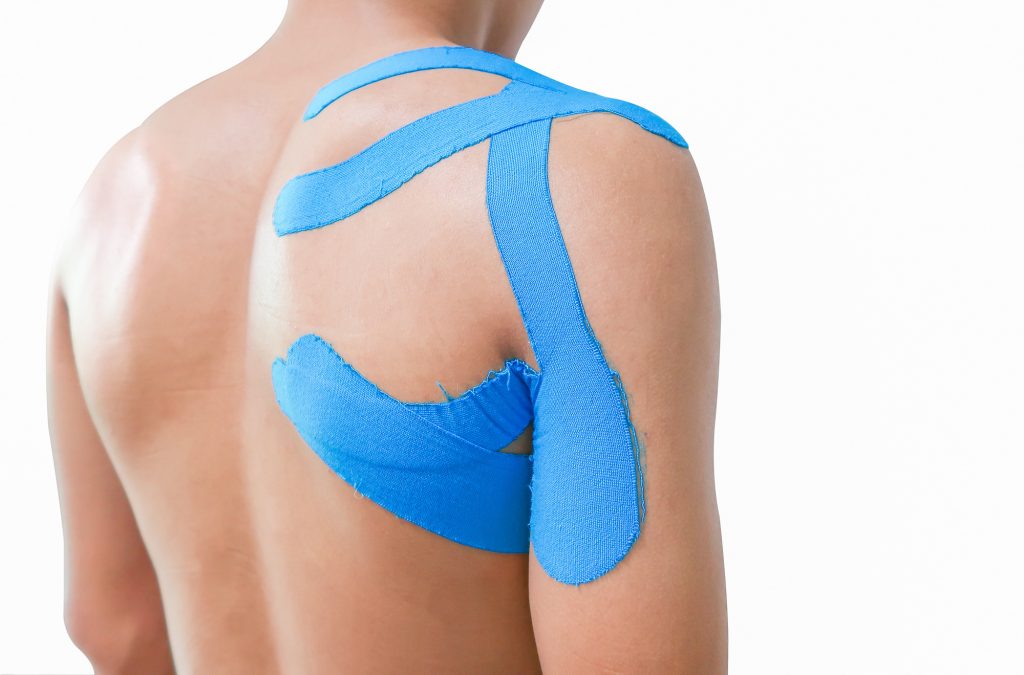
Kinesiology taping is used to provide stability to joints and muscles and to assist in movement depending on the condition. It increases blood flow in the region and removes metabolic waste. There are many benefits such as Proprioceptive facilitation, reduced muscle fatigue, muscle facilitation, reduces delayed onset muscle soreness, pain inhibition and reduces Oedema.
- Manual Therapy
At °CRYO we also use various manual therapy such as stretching, mobilization of joints, soft tissue manipulation, traction and trigger point release. Basis of consultation respective treatments is provided.
Follow up of the patients is done on a regular basis by our physiotherapist.
FOLLOW UP SESSIONS
Your physiotherapist will re-assess your condition during each session and you will decide together whether you need a follow-up appointment, are safe to continue treatment yourself or are recovered.
The time in-between sessions will reflect the condition itself. If you need a follow-up session this usually won’t be daily, in order to give you time to make improvements.
As you improve throughout treatment you may be given additional exercises to do, or you may be able to stop them altogether.
You won’t be discharged from treatment until you are confident that you can either continue treatment on your own or have recovered from your injury. Recovery from some conditions, such as ACL surgery, will take a long time, but with most conditions, people find that they are able to finish physiotherapy treatment in five sessions or less.
Top tips for successful physiotherapy treatment
- Communication: It is important to inform your physiotherapist about your pain/injury in detail so they can diagnose the concern.
- Discipline: Always follow the prescribed exercise and precautions post treatment.
- Listen: Always listen to your body, if there is too much pain or the feeling of being uncomfortable pre and post treatment. And inform your physiotherapist right away.
